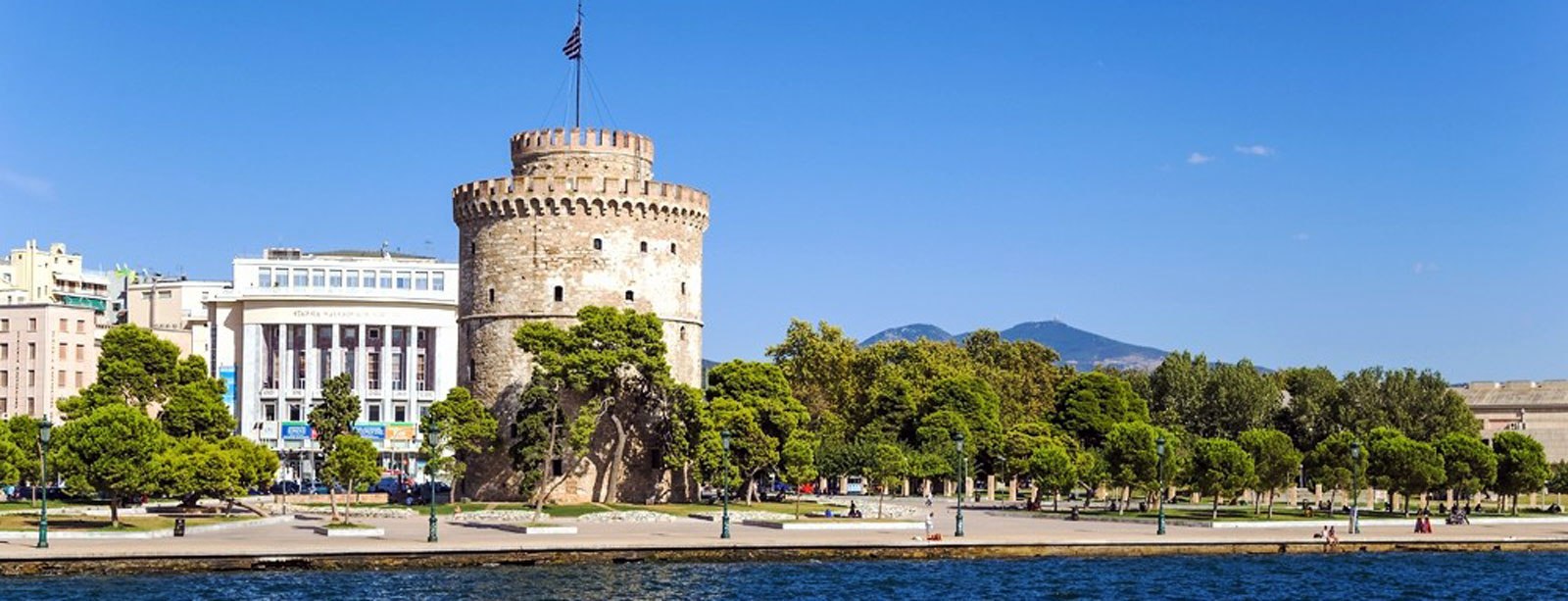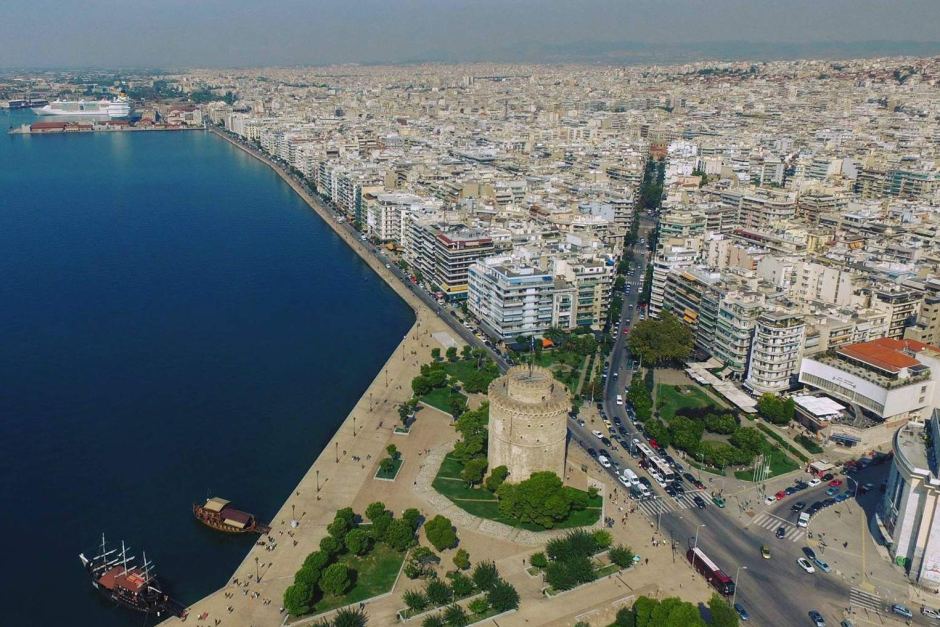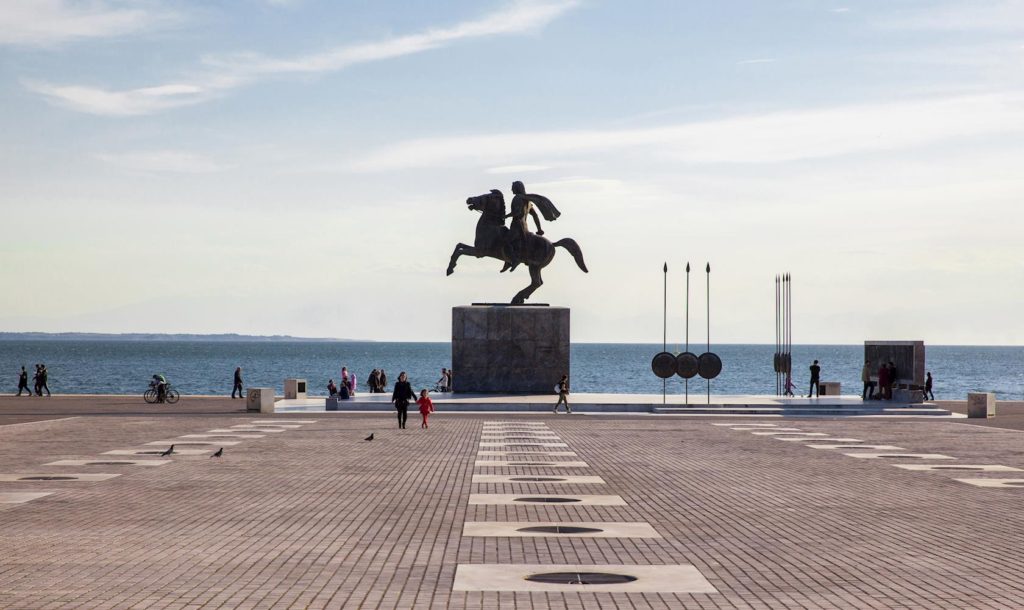
THESSALONIKI

Both Thessaloniki and the cosmopolitan district of Kalamaria in which our hotel is located are ideal for all visitors. Couples, companions, families, professionals are ready to be enchanted by the energetic and erotic northern city.
The walks in the city are enchanting. The Upper Town with its colorful houses bathed in the sun castles with magical view of Thermaikos and the necessary afternoon walk in Kapani Thessaloniki will give color and fragrance in the memories of your trip. The dozens of Byzantine churches, the White Tower, Jewish synagogues, the old mansions and architecture of Aristotelous Street have transformed Thermaikos in one of the largest metropolises in the Balkans.

Modern History
From the mid-19th century and early 20th, Thessaloniki entered a new era. During this period, the Ottoman Empire attempted major social and economic reforms. As such, with the advent of the 20th century it had gas, lighting, trams, telephone, modern docks at the port and the most important, its first industries.
The truly modern age of the city begins with its release. The Greeks quickly became the dominant population in the city, introducing new management and clarifying the Ottoman past. The great fire of August 1917, which destroyed the “oriental” character of much part of the city and most part of the center, contributed to the great change of the look and character of the city. Asia Minor refugees in the 1920s and their large accommodation needs contributed to it decisively.
Local traditions, the unique history of the city at the crossroads of cultures and people, affected the cultural and the artistic expression of Thessaloniki, creating a folkloric and popular tradition, especially in music, which was unique in its kind.
The greater area of Thessaloniki is inhabited since prehistoric times, while noteworthy is the fact that Thessaloniki has been a city throughout its history without ever losing that status.
Prehistoric Years
Long before the creation of the city and for 23 centuries, the area of the Thermaic Gulf was full of settlements dating back to the Stone Age. To date, seven of these prehistoric settlements have been found in the area, which proves that the place was inhabited from the fifth or sixth millennium B.C.
Antiquity – Kingdom of Macedonia
The history of Thessaloniki begins around 315/6 B.C. when Cassandros later King of Macedonia (the husband of the sister of Alexander the Great) united the surrounding settlements into a larger new city, giving the city the name of his wife, Thessaloniki. The new city was created in an area of great geostrategic importance – at the end of the valley of Axios river. It soon became a metropolitan center, a profile that has maintained until today, a very considerable achievement for a history of 23 centuries.
Middle Ages – Byzantium
Thessaloniki developed and became the second largest city of the Empire after Constantinople, and of the most important administrative and military centers of the Empire. The city’s fortifications were the second after Constantinople’s both in size and importance. The city’s population grew rapidly in the late 15th century and the first decades of the 16th.
Transport – Transportation
As the main transportation hub of northern Greece, Thessaloniki has easy access by road, rail and air.
By car, is located on the international axis PA.THE (Patra, Athens, Thessaloniki, and Evzoni), while with the completion of the Egnatia highway it now connects easily with the rest of Greece, from the Ionian Sea to the Greek-Turkish borders. The completion of the Egnatia, apart from the existing ring road has also created in the city and the outer circumferential that allows travelers to Eastern Macedonia and Thrace to completely bypass the city.
By rail is connected with regular services to Athens, whilst the fast Intercity trains make the trip in less than 4.5 hours. Moreover, Thessaloniki is, due to its position, a main railway hub connection with the Balkans, Central Europe and Turkey with direct routes.
The Railway Station of Thessaloniki is located on the west side of the city close to Dimokratias Square (Vardari) and is served by urban transportation with most lines of the city from all its points.
The airport “Macedonia” is also an important Greek and international hub with regular services to the rest of Greece, and to other key international destinations. There are plans to expand the airstrips in order to be able to receive long-haul flights.
Thessaloniki’s Airport is located 16 km east from the city center and is serviced regularly by bus routes (Bus No 78 departs from the Railway Station in western Thessaloniki) and with a taxi.
The dominant role for the transportation within the city has the Organization of Urban Transportation of Thessaloniki (OASTH) with all buses which belong to it.
Taxis are everywhere and you can get a taxi either by booking it (with the taxi company), or by a direct call to a taxi company or by stopping one at many points in the streets, or in any of the numerous taxi ranks.
Distances
- Airport : 8km
- Railway station: 9km
- KTEL : 12km
- Aristotelous Square : 7km
- TIF : 6km
- White Tower : 6km
- Thessaloniki Concert Hall : 4km
- Ano Poli (Upper or old Town) : 7km
- Nea Paralia : 4km
- Ladadika : 8km
- Government House (Palataki) : 0,5km
- Theater Melina Merkouri : 0,5km
- Regency Casino : 8km
Radio Taxi of Thessaloniki
Macedonia: 2310 550500-1
Megas Alexandros: 2310 866866
Thessaloniki: 2310 551525
Omega: 2310 511855
White Tower: 2310 214900
Ask our reception staff for information regarding your transportation. We will be glad to assist you.
The climate of Thessaloniki
The climate is more continental and less Mediterranean with a lot of moisture due to the Thermaic Gulf. The famous north wind Vardaris blows in the city occasionally helping as such to the ventilation of the city but generally, the city is affected less by northeastern winds.
Winter is usually quite heavy and while it snows in the city almost every winter, however, many times the snowfall is intense even in the center, although the snow within the city does not last long.
The wettest months are from October to December whilst rainfalls are often heavy and long in duration. On the other hand, the summer is as hot as it is in the rest of Greece.



